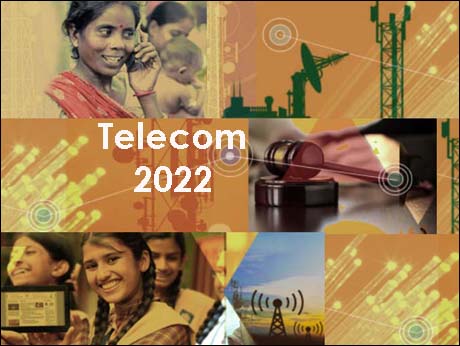
New Delhi, May 3 2018: The Communications ministry of the government of India has released the Draft National Digital Communications Policy 2018, setting out its road map to achieve strategic objectives, fueled by telecommunications, by 2022.
Says the official statement: "The objective of this document is to lay out a policy and principles framework that will enable creation of a vibrant competitive telecom market to strengthen India’s long term competitiveness and serve the needs of our aspiring nation. It has been broadly estimated that a 10% increase in broadband penetration in a country could potentially lead to an over 1% increase in GDP. However, studies in India estimate that the impact could be significantly higher for the country, given the increased productivity and efficiency gains that are likely to accrue to the economy.
The National Communications Policy aims to accomplish the following Strategic Objectives by 2022:
1. Provisioning of Broadband for All
2. Creating 4 Million additional jobs in the Digital Communications sector
3. Enhancing the contribution of the Digital Communications sector to 8% of India’s GDP from ~ 6% in 2017
4. Propelling India to the Top 50 Nations in the ICT Development Index of ITU from 134 in 201
5. Enhancing India’s contribution to Global Value Chains 6. Ensuring Digital Sovereignty
The goals for 2022 have been spelt out:
a. Provide Universal broadband coverage at 50 Mbps to every citizen
b. Provide 1 Gbps connectivity to all Gram Panchayats of India by 2020 and 10 Gbps by 2022
c. Enable 100 Mbps broadband on demand to all key development institutions; including all educational institutions
d. Enable fixed line broadband access to 50% of households
e. Achieve ‘unique mobile subscriber density’ of 55 by 2020 and 65 by 2022
f. Enable deployment of public Wi-Fi Hotspots; to reach 5 million by 2020 and 10 million by 2022
g. Ensure connectivity to all uncovered areas .
The document lays out the background:
"Currently, India has approximately 1.5 million kilometres of Optical Fibre Cable, and less than one-fourth of the towers are fibre-connected. In order to expand mobile and broadband connectivity across the country, it is necessary to explore and utilise the opportunities presented by next-generation-networks like 5G and other pioneering network access technologies including satellite communications."
... And spells out its priority:
"While India has embarked on one of the world’s largest rural optic fibre roll-outs in the world, aiming to connect 600,000 of its villages by broadband through its flagship initiative called ‘BharatNet’; the convergence of a cluster of revolutionary technologies including 5G, the cloud, IOT and data analytics, along with a growing start-up community, promise to accelerate and deepen its digital engagement, opening up a new horizon of opportunities. As the world prepares for what is increasingly being called as the fourth industrial revolution, India, and indeed every single sector of its economy, need to be readied to embrace this wave."
Detailed process for receiving the comments and inputs from the public as well as stakeholders arte expectyed to be uploaded shortly. Link to 22-page PDF of draft policy
The first reaction to the draft policy has appeared today in an editorial in Financial Express entitled: "Draft telecom policy of no use, change the rules".